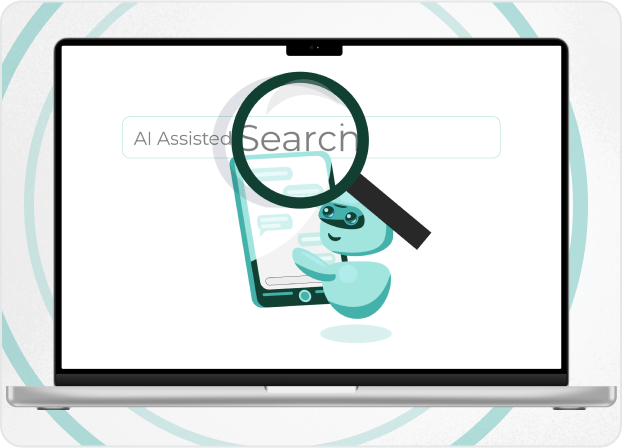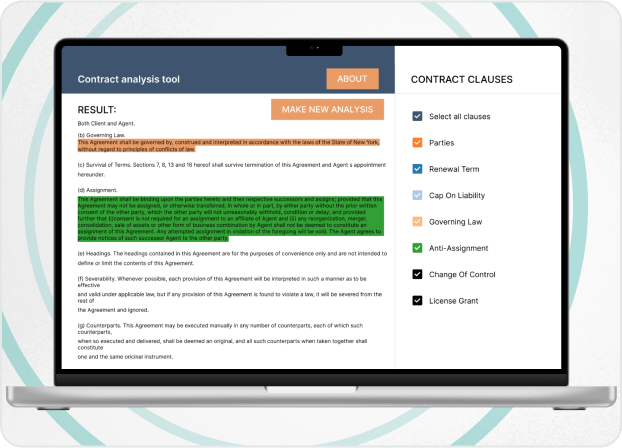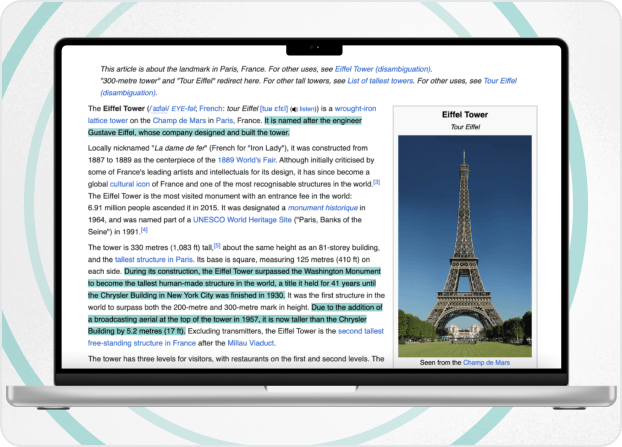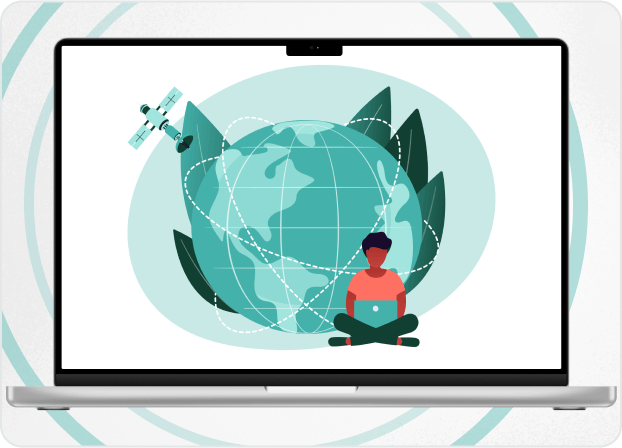
Author’s Thoughts

"AI chatbots are making learning more intuitive and teaching more efficient. For students, they provide instant answers, adapt to their learning pace, and offer 24/7 support. For educators, they automate grading, respond to FAQs, and analyze data for better insights. It’s smarter learning with less friction for everyone."
Yuri Svirid, PhD. — CEO Silk Data
Chatbot for Education
Gone are the days of one-size-fits-all learning, where students sat through lectures and hoped the information would stick. Today, artificial intelligence in education is paving new ways students engage with knowledge. Today’s learners prefer dynamic, interactive platforms that offer quick, personalized responses. To keep up, education needs to be more than just informative — it must be responsive and engaging. AI chatbot for education fits this shift perfectly, providing real-time support tailored to students' evolving needs.
AI in Education: Market Insights
- The AI education market is projected to reach $55.4 billion by 2030.
- A Pew Research study indicates that approximately 25% of U.S. teens now utilize ChatGPT for school-related tasks.
- According to Microsoft Special Report, 24% of educators use AI to create and update lesson plans, while 32% of students rely on it for brainstorming ideas for their assignments.
What Are Chatbots?
At their core, chatbot for education act as AI study companion that can provide instant explanations, personalized tutoring, and interactive exercises, all through a chat-based interface. This means students can learn at their own pace, whenever and wherever they want.
But it's not just students who benefit — AI teaching chatbots are streamlining teaching by automating grading, tracking student progress, and answering common questions instantly. Chatbots can manage assignments, provide personalized learning insights, and even flag struggling students early. With less time spent on admin work, educators can focus on teaching and student engagement.
How Chatbots Are Making Learning Easier?
More than half of educators see AI as a positive force in education, and 73% of students agree that chatbots help them learn faster, according to Quizlet.

Help Is Always Available
Unlike human tutors, AI doesn’t sleep. Whether it’s cramming at 2 AM or reviewing before class, chatbots are there to answer questions instantly. No waiting, no stress.

Learning at Your Own Speed
AI chatbots adjust to each student’s pace — speeding up for those who grasp concepts quickly and slowing down to explain tricky topics.
According to a study by McKinsey & Company, AI-driven personalized learning platforms have shown to improve student outcomes by up to 30%.

Instant Feedback
No more submitting an assignment and waiting days for feedback. AI chatbots provide real-time explanations, helping students fix mistakes and understand concepts on the spot. This makes learning less frustrating and more effective.

Feels Like a Conversation, Not a Lecture
Let’s face it — textbooks can be dry, and even video lessons aren’t interactive. Chatbots turn studying into a two-way conversation, making it easier to stay engaged and actually absorb information.

Tutoring Without the Price Tag
Private tutors are expensive, and not every student has access to extra help. Chatbots level the playing field, offering high-quality learning support for free or at a fraction of the cost.

Making Teachers’ Lives Easier
Chatbots take care of repetitive tasks — like answering common questions, grading quizzes, and tracking student progress — so educators can focus on real teaching and one-on-one support. Studies show that AI-assisted teaching can boost student engagement by 40% (Pew Research).
At the end of the day, chatbots aren’t here to replace teachers — they’re here to help. And for students, they mean more support, less stress, and a way to learn that actually works for them.
Key Concerns of AI Chatbots for Education
Plagiarism and Cheating
AI chatbots provide instant answers and generate content, which raises concerns about academic integrity. Students may misuse them for assignments, bypassing critical thinking and original work. To tackle this, educators need smarter assessments, solid AI detection tools and plagiarism checkers, and, most importantly, to teach students that AI should support learning, not replace it.
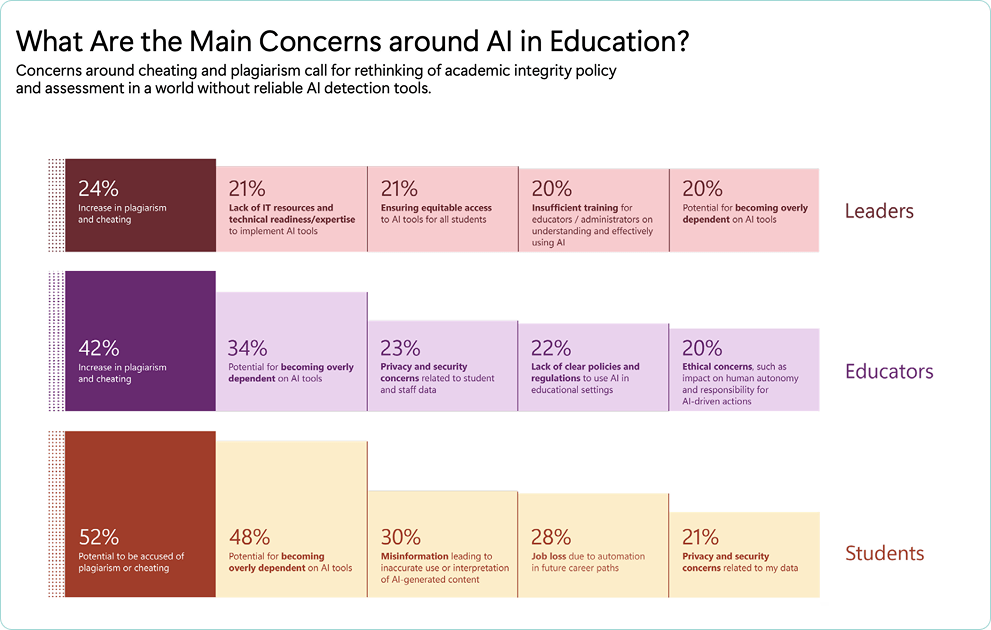
Source: AI in Education, A Microsoft Special Report
Inaccurate or Misleading Responses
AI chatbots aren’t perfect. They rely on training data and algorithms that may sometimes produce incorrect or biased information. Without proper oversight, students may receive misleading answers or an oversimplified view of complex topics.
Unfair Assessment
One challenge educators face with chatbots in education is assessing student work, especially written assignments. AI-generated text detection isn’t perfect, sometimes missing AI-written content or flagging human work false positive. This uncertainty makes grading harder and raises concerns about academic integrity, fair assessments, and the accuracy of feedback.
To help business tackle this, our tool Plagiarix provides smart AI detection, making assessments fair, maintaining academic integrity, and giving educators peace of mind when evaluating student work.
Limited Human Connection
While chatbots can provide quick answers, they lack emotional intelligence, empathy, and real-world teaching experience. Students still need human guidance for critical thinking, deep discussions, and motivation, which AI can’t fully replace.
Data Privacy & Security Risks
AI chatbots collect and process student data, which raises concerns about who has access to this information and how it’s stored. Schools must ensure compliance with privacy laws like GDPR and FERPA to protect student information.
Bias in AI Responses
AI learns from existing data, which can sometimes include cultural, historical, or gender biases. If not carefully monitored, chatbots may reinforce stereotypes or provide unbalanced perspectives on important issues.
Over-Reliance on AI
If students rely too much on chatbots for quick answers, they may stop developing essential problem-solving and critical thinking skills. Learning isn’t just about getting the right answer — it’s about understanding how to find and evaluate information.
Integration Challenges
Not all schools have the resources to properly integrate AI chatbots into their learning management systems (LMS). Some teachers may find them difficult to use, requiring additional training and IT support.
Teacher Concerns & Resistance
Some educators fear AI could replace traditional teaching roles or make their expertise less valuable. Others may struggle to adapt to AI-driven tools, leading to inconsistent use in classrooms.
AI Chatbots in Schools
More and more schools are integrating AI conversational chatbots into their teaching methods. Whether it’s AI chat for learning foreign languages, solving tricky algebra equations, or prepping for exams, chatbots are bridging gaps in education.
Stanford's teaching resources show that chatbots are flexible and useful tools in education. Here are the key takeaways from Stanford’s Teaching Resources article on chatbots in education:

Chatbots Take the Hassle Out of Classroom Q&A.
Instead of repeatedly answering “When is the assignment due?” or “Where do I submit this?”, instructors can let AI handle the routine questions — freeing up time for actual teaching.

Low-stakes Practice without the Fear of Judgment.
Whether it's language learning, debate skills, or technical concepts, chatbots provide a safe, pressure-free space for students to practice without the anxiety of being graded.

Smart Flashcards that Learn with You.
Unlike static flashcards, AI-driven tools adapt over time, reinforcing weaker areas and ensuring that knowledge actually sticks.
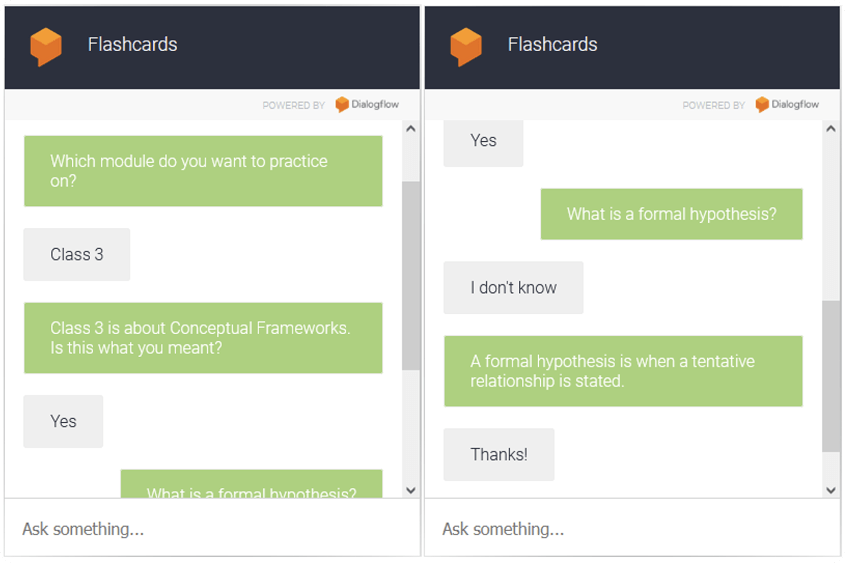
Source: Stanford’s Teaching Resources

Feedback Collection.
Some students hesitate to voice their concerns in a formal setting. Chatbots create a low-pressure, anonymous space for honest feedback, helping educators fine-tune their approach
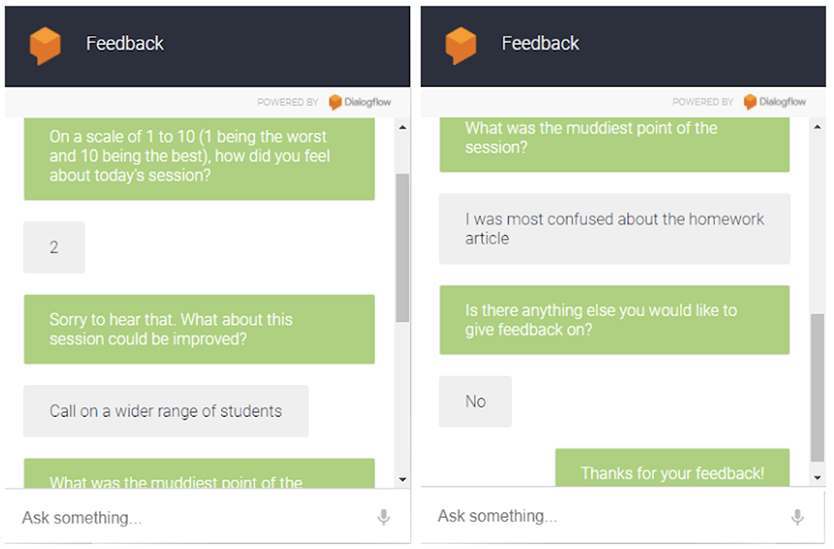
Source: Stanford’s Teaching Resources
Historical AI
Some schools are making history come alive with AI-powered historical figures, letting students chat with famous people from the past. Imagine debating philosophy with Socrates, getting leadership tips from Abraham Lincoln, or asking Steve Jobs about innovation. Historical figures AI bots use NLP and machine learning to recreate real conversations based on historical texts, speeches, and writings.
Students aren’t just memorizing facts — they’re actively engaging, asking questions, and thinking critically. It’s a hands-on way to explore history, connect it to modern issues, and make learning more interactive and personal.
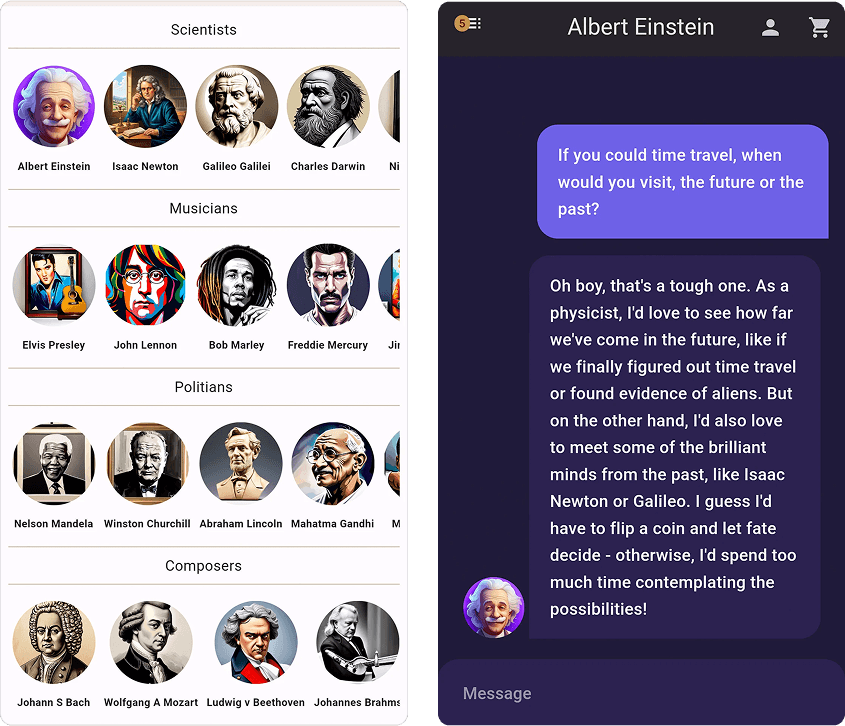
Source: AI History Chat: Historic Talk play.google.com
Chatbots for Teachers: AI as a Teaching Assistant
Training chatbots help teachers with professional development, instructional support, and automating routine tasks. Schools that have integrated teaching chatbots report increased efficiency, allowing educators to focus more on creative lesson planning, brainstorm new ideas for assignments, quiz generation and much more.
The Future of AI-Powered Learning
The shift toward chat-based learning means that students can get instant, tailored support while teachers can enhance their teaching with AI assistance. Whether it’s AI chat for learning languages or historical AI making history classes more engaging, chatbots are revolutionizing education.
Some worry that AI might replace teachers, but that’s missing the bigger picture. AI isn’t here to take over — it’s here to enhance human-led learning. The best education happens when technology and human expertise work hand in hand.
Wrapping Up
AI in education isn’t a passing trend. Learning can be frustrating when you’re stuck on a problem with no one around to help. Chatbots offer 24/7 support, adapting to your pace and learning style so you never feel lost. They’re not perfect, but they make studying easier, more engaging, and less stressful when used alongside human guidance.
Chatbots are helpful tools, but they can’t replace the warmth, creativity, and encouragement that teachers provide. Instead, AI works best as a supportive assistant, helping teachers focus on what they do best — teaching and mentoring.
Our Solutions
We work in various directions, providing a vast range of IT and AI services. Moreover, working on any task, we’re able to provide you with products of different complexity and elaboration, including proof of concept, minimum viable product, or full product development.





















